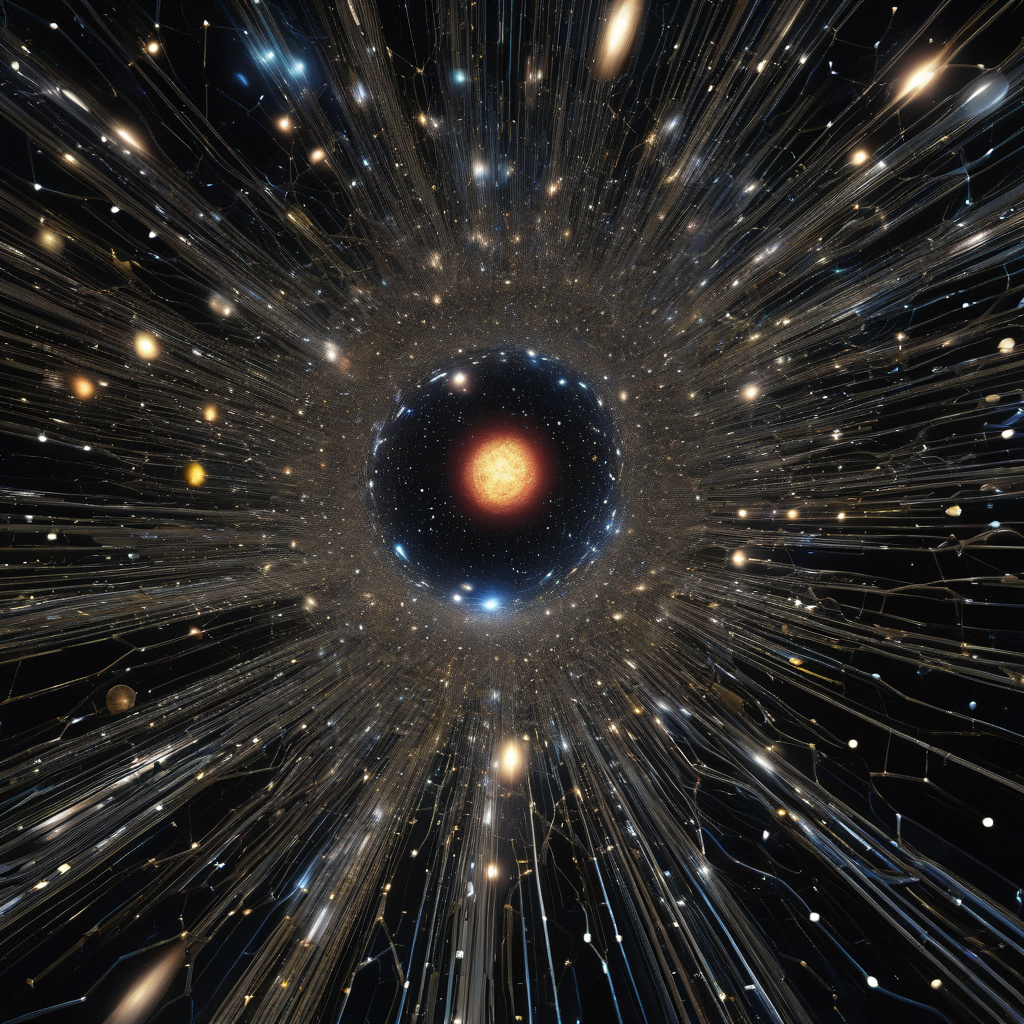Magnetic Fields Billion Times Weaker Than a Fridge Magnet Shaped Early Universe
A new study reveals that magnetic fields in the early universe were likely billions of times weaker than those produced by a fridge magnet. The research, conducted by a team of astrophysicists, sheds light on the conditions that prevailed in the cosmos during its formative years. By analyzing ancient light that has traveled across billions of light-years to reach us, scientists have been able to piece together a clearer picture of the magnetic environment that existed shortly after the Big Bang.
The findings challenge previous assumptions about the strength of magnetic fields in the early universe. While magnetic fields are ubiquitous in the cosmos today, ranging from the magnetic fields of planets and stars to the vast magnetic structures that permeate interstellar space, their origins have long been a subject of debate among scientists. The new study suggests that the magnetic fields present in the primordial universe were much weaker than commonly believed, indicating that they may have played a less significant role in shaping the evolution of cosmic structures than previously thought.
One of the implications of this research is that other factors, such as the distribution of dark matter and the effects of primordial gravitational waves, may have had a more prominent influence on the formation of galaxies and galaxy clusters in the early universe. By refining our understanding of the magnetic environment of the cosmos during its infancy, scientists can gain valuable insights into the processes that governed the growth and evolution of cosmic structures over billions of years.
The study also has important implications for our understanding of the origins of cosmic magnetism. While magnetic fields are known to exist throughout the universe today, their ultimate source remains a topic of ongoing research. By constraining the strength of magnetic fields in the early universe, scientists can narrow down the possible mechanisms by which these fields were generated and amplified over cosmic time.
One of the key challenges in studying magnetic fields in the early universe is the fact that they leave subtle imprints on the light emitted by distant cosmic sources. By carefully analyzing this light using advanced telescopes and sophisticated computer models, scientists can tease out the faint signals of primordial magnetic fields from the sea of background noise that pervades the cosmos. The latest study represents a significant step forward in this endeavor, providing new constraints on the properties of magnetic fields in the early universe.
As our technology continues to advance and our observational capabilities improve, we can expect to learn even more about the magnetic environment of the early universe and its role in shaping the cosmos as we know it today. By unraveling the mysteries of cosmic magnetism, scientists are not only gaining a deeper understanding of the fundamental forces that govern the universe but also uncovering clues about the origins of galaxies, stars, and ultimately, life itself.
In conclusion, the new study highlighting magnetic fields billions of times weaker than a fridge magnet in the early universe opens up exciting avenues for future research into the cosmic forces that have shaped our universe. By peering back in time to the cosmic dawn, scientists are uncovering the secrets of the magnetic cosmos and gaining valuable insights into the processes that have driven the evolution of the universe from its earliest moments to the present day.
early universe, magnetic fields, astrophysics, cosmic evolution, cosmic magnetism












